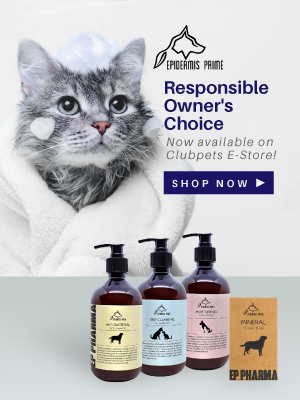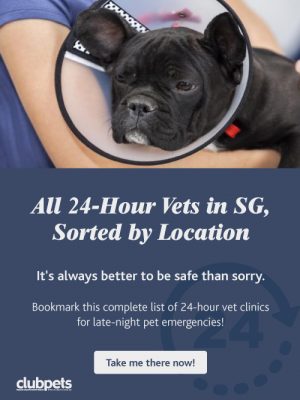Driving with Pets: A Guide to Helping Your Dog & Cat Get Used to Car Rides

When you have a pet cat or dog in Singapore, car rides are unavoidable. You will have to bring your pet to a veterinary clinic for medical check-ups, vaccinations, and more, and you may even wish to bring your pet out for a drive around the sunny island!
However, not all dogs and cats are comfortable with car rides. Some may experience anxiety, some may experience motion sickness, and if your pet’s unhappy in the car, trust us — nobody will be happy.
To ensure safe and enjoyable travels for you and your pet, here’s a guide to turn your pet into happy camper in cars! Read on, and bon voyage!
Understanding your pet’s needs

Before you can help your pet feel safe and secure, you need to have a clear understanding of what are its stress triggers. For both cats and dogs, these include the removal from familiar surroundings, as well as unfamiliar smells, sounds, and surroundings.
With this in mind, you’ll understand better the need for the following steps:
1. Familiarise your pet with a stationary car
A car is probably unlike anything your pet has seen or been in before, so it’s only natural that it may feel wary about it. Help your pet associate the car with wonderful things via desensitisation and counter-conditioning, and your pet will soon get into cars willingly!
To do so, gradually introduce your pet to the car. Start from simply spending time near the car so progressing to spending time inside the car, while it’s stationary. At every stage, give your pet something it values greatly to form a positive association — this includes it’s favourite treat, favourite toy, or even a play session.
Only take it a step further when your pet is completely relaxed at the current stage! If your pet stops eating or playing, you’ve moved too fast. In all, this process may take days, weeks, or months, depending on your pet’s pace.
2. Alternatively, familiarise your pet with a carrier
In line with providing a familiar environment to ease the stress levels of your pet, if your dog is small enough, or if you have a cat, it may be better to familiarise your pet with a carrier instead and subsequently use that carrier to transport your pet during car rides, especially if you’re heading to one of the vets in Singapore.
To acclimatise your pet to the carrier, you may kickstart the process at home:
- Place the carrier within your home’s everyday environment.
- Open up the carrier door so that your cat or dog can inspect it leisurely.
- Sprinkle some catnip or treats in the carrier once a day to entice your pet to enter on its own accord.
- Add your pet’s favourite blanket, toys, or bed in the carrier to make it more comfortable and inviting.
- Gradually make the carrier part of your home’s furniture at a place where your pet likes to sleep at or is fed.

In addition, for cats, you may consider spritzing some Feliway into the carrier or on the carrier cover at least 15 minutes before you place your cat in it for the car ride. It’s a natural cat calming pheromone that is very effective for relieving anxiety and stress in cats!
3. Make sure they are strapped in
Just as it is a rule for everybody in the car to keep their seatbelt on, pets need to have some type of restraint to ensure their safety too! Make sure you have a seat-belt harness or a pet carrier made for cars for your pet to use.
For the pet carrier, ensure that it is secured in a footwell or with a seatbelt so that it cannot move around. The carrier should also not be too large, such that your pet can slide around in the carrier.
4. Build up resistance to motion sickness
Cats and dogs can get motion sickness, so gradually build up their tolerance by taking short trips to a pleasant location such as a nearby park and provide a reward when you reach your destination to associate the car ride with a good experience!
Some signs of motion sickness in your pet include excessive drooling, smacking or licking lips, and vomiting, so keep a close eye for these symptoms to know when to stop the car ride. You should also place your pet on a towel or padding to absorb potential ‘accidents’, and prepare plenty of wet wipes.
As an additional precaution against motion sickness, avoid feeding your pet before the journey, and keep the car well-ventilated and cool!








